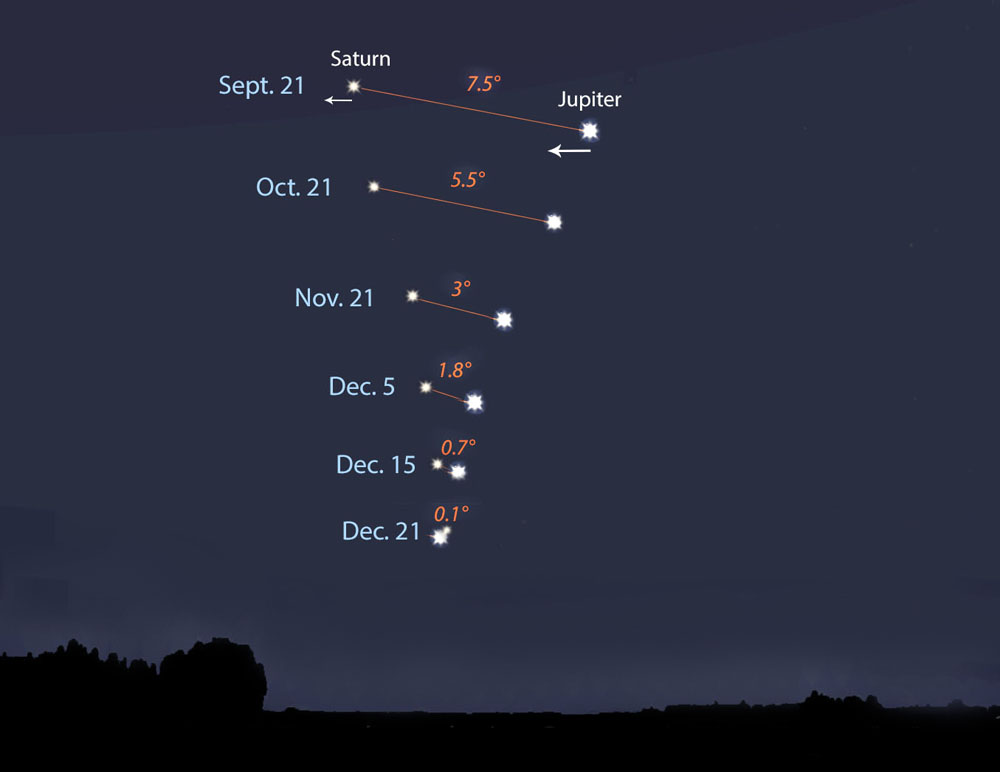Jupiter- Saturn Great Astronomical Conjunction
On December 21, 2020 the world is to witness a rare celestial event, the conjunction of Saturn and Jupiter.
How often does this occur?
The next time, the two giants will come this close only on March 15, 2080. The last time these planets came this close was on July 16, 1623. Earlier to this, it occurred in 1226. As this conjunction occurs after 400 years, it is called as ‘Great Conjunction’.
Is it visible to naked eye?
The planets are to come so close to each other that they will appear as one bright dot. However, the distance between them will be 735 million kilometres. The event is to be visible from all over the world. It can be seen with naked eye without any special instruments. This can be witnessed in the southwestern part of the sky.
Jupiter to overtake Saturn
The planets are on a race track in revolving the sun. Jupiter takes twelve years to revolve around the sun and Saturn takes 29 years. Therefore, the faster planet overtakes the slower
Winter Solstice
Along with the conjunction of the planets, December 21 is the winter Solstice Day in the northern Hemisphere. It will be the longest night of the year. During Winter Solstice, the sun reaches its most southerly declination of -23.5 degrees. Also, during Winter solstice, North Pole is tilted farthest away from the sun. During this period, sun is directly overhead of the Tropic of Capricorn in the Southern Hemisphere.
Summer Solstice
It occurs on June 21 in the Northern Hemisphere. The longest day and shortest night occur on Summer Solstice. During Summer Solstice, the sun rays fall directly on Tropic of Cancer. The Arctic Circle experiences continuous daylight for about six months as the north pole is tilted towards the sun.
Month: Current Affairs - December, 2020


